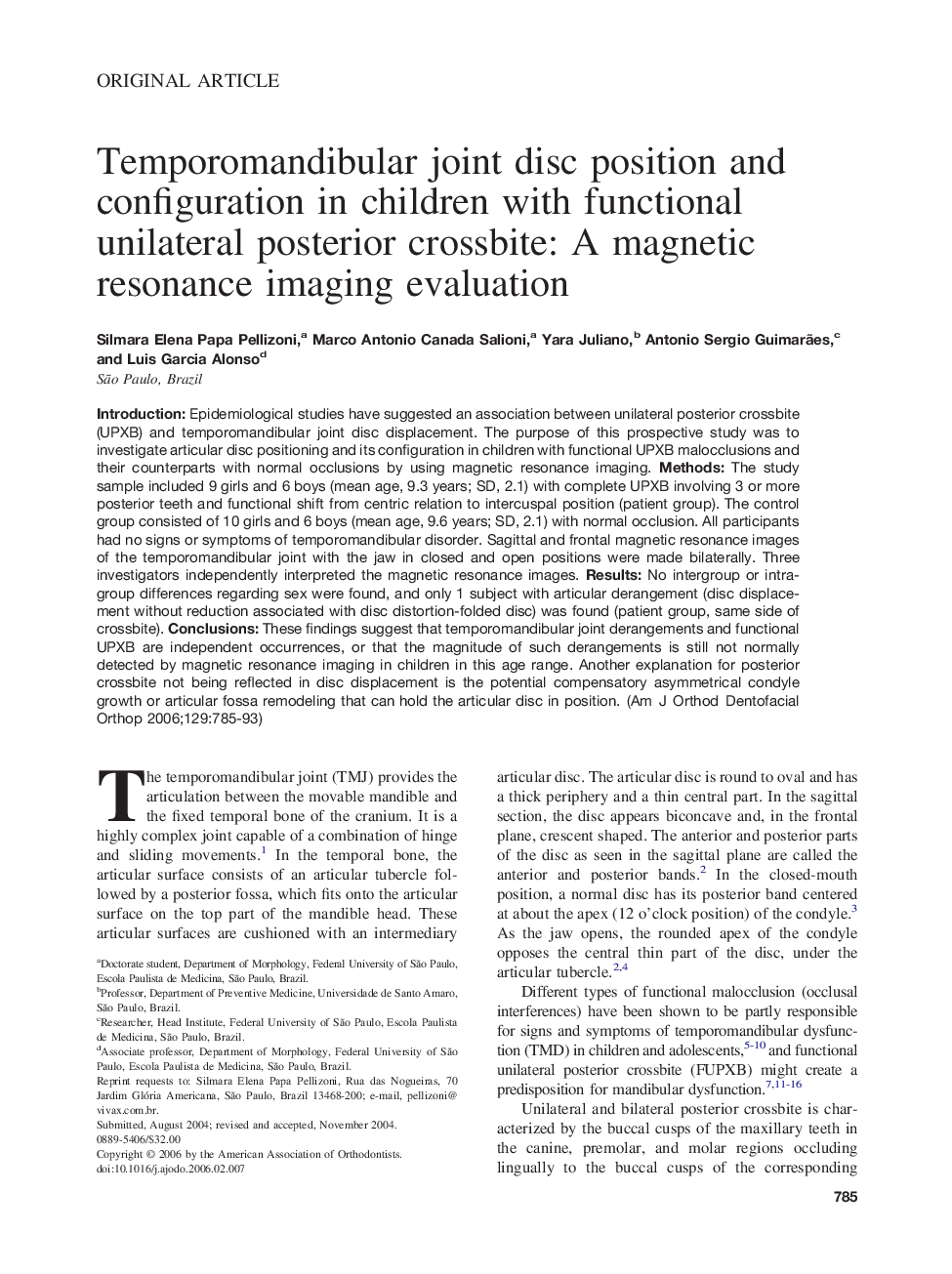| کد مقاله | کد نشریه | سال انتشار | مقاله انگلیسی | نسخه تمام متن |
|---|---|---|---|---|
| 3120159 | 1582805 | 2006 | 9 صفحه PDF | دانلود رایگان |

Introduction: Epidemiological studies have suggested an association between unilateral posterior crossbite (UPXB) and temporomandibular joint disc displacement. The purpose of this prospective study was to investigate articular disc positioning and its configuration in children with functional UPXB malocclusions and their counterparts with normal occlusions by using magnetic resonance imaging. Methods: The study sample included 9 girls and 6 boys (mean age, 9.3 years; SD, 2.1) with complete UPXB involving 3 or more posterior teeth and functional shift from centric relation to intercuspal position (patient group). The control group consisted of 10 girls and 6 boys (mean age, 9.6 years; SD, 2.1) with normal occlusion. All participants had no signs or symptoms of temporomandibular disorder. Sagittal and frontal magnetic resonance images of the temporomandibular joint with the jaw in closed and open positions were made bilaterally. Three investigators independently interpreted the magnetic resonance images. Results: No intergroup or intragroup differences regarding sex were found, and only 1 subject with articular derangement (disc displacement without reduction associated with disc distortion-folded disc) was found (patient group, same side of crossbite). Conclusions: These findings suggest that temporomandibular joint derangements and functional UPXB are independent occurrences, or that the magnitude of such derangements is still not normally detected by magnetic resonance imaging in children in this age range. Another explanation for posterior crossbite not being reflected in disc displacement is the potential compensatory asymmetrical condyle growth or articular fossa remodeling that can hold the articular disc in position.
Journal: American Journal of Orthodontics and Dentofacial Orthopedics - Volume 129, Issue 6, June 2006, Pages 785–793